Related Research Articles

Somerset is a county in South West England which borders Gloucestershire and Bristol to the north, Wiltshire to the east, Dorset to the south-east and Devon to the south-west. It is bounded to the north and west by the Severn Estuary and the Bristol Channel, its coastline facing southeastern Wales. Its traditional border with Gloucestershire is the River Avon. Somerset is currently formed of six council areas, of which two are unitary authorities, until the four second-tier district councils are merged on 1 April 2023, after which the county will comprise three unitary authorities. Its county town is Taunton.

Bridgwater is a large historic market town and civil parish in Somerset, England. Its population currently stands at around 41,276 as of 2022. Bridgwater is at the edge of the Somerset Levels, in level and well-wooded country. The town lies along both sides of the River Parrett; it has been a major inland port and trading centre since the industrial revolution. Most of its industrial bases still stand today. Its larger neighbour, Taunton, is linked to Bridgwater via a canal, the M5 motorway and the GWR railway line.

The River Parrett flows through the counties of Dorset and Somerset in South West England, from its source in the Thorney Mills springs in the hills around Chedington in Dorset. Flowing northwest through Somerset and the Somerset Levels to its mouth at Burnham-on-Sea, into the Bridgwater Bay nature reserve on the Bristol Channel, the Parrett and its tributaries drain an area of 660 square miles (1,700 km2) – about 50 per cent of Somerset's land area, with a population of 300,000.

The Somerset Levels are a coastal plain and wetland area of Somerset, England, running south from the Mendips to the Blackdown Hills.

North Petherton is a small town and civil parish in Somerset, England, situated on the edge of the eastern foothills of the Quantocks, and close to the edge of the Somerset Levels. The town has a population of 6,730 as of 2014. The parish includes Hamp, Melcombe, Shearston, Woolmersdon and Huntworth.
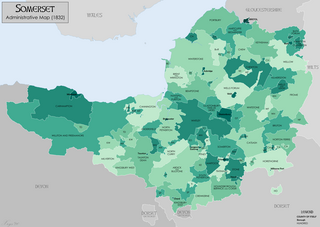
Somerset is a historic county in the south west of England. There is evidence of human occupation since prehistoric times with hand axes and flint points from the Palaeolithic and Mesolithic eras, and a range of burial mounds, hill forts and other artefacts dating from the Neolithic, Bronze and Iron Ages. The oldest dated human road work in Great Britain is the Sweet Track, constructed across the Somerset Levels with wooden planks in the 39th century BCE.

Wicker is the oldest furniture making method known to history, dating as far back as 5,000 years ago. It was first documented in ancient Egypt using pliable plant material, but in modern times it is made from any pliable, easily woven material. The word wicker or "wisker" is believed to be of Scandinavian origin: vika, which means "to fold" in Swedish, and vikker meaning willow. Wicker is traditionally made of material of plant origin, such as willow, rattan, reed, and bamboo, but synthetic fibers are now also used. Wicker is light yet sturdy, making it suitable for items that will be moved often like porch and patio furniture. Rushwork and wickerwork are terms used in England. A typical braiding pattern is called Wiener Geflecht, Viennese Braiding, as it was invented in 18th century Vienna and later most prominently used with the Thonet coffeehouse chair.
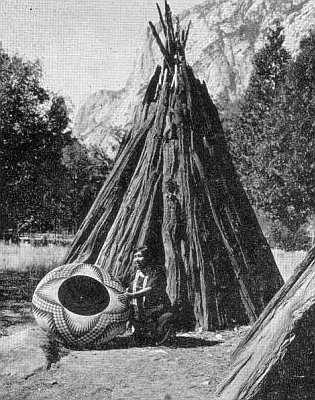
Basket weaving is the process of weaving or sewing pliable materials into three-dimensional artifacts, such as baskets, mats, mesh bags or even furniture. Craftspeople and artists specialized in making baskets may be known as basket makers and basket weavers. Basket weaving is also a rural craft.

The West Country Carnival Circuits are an annual celebration featuring a parade of illuminated carts in the English West Country. The celebration dates back to the Gunpowder Plot of 1605. The purpose is to raise money for local charities.

British Cellophane Ltd (BCL) was a joint venture company formed in 1935 between La Cellophane SA and Courtaulds, when they began building a major factory for producing Cellophane in Bridgwater, Somerset, England.
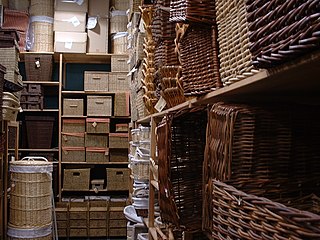
A hamper refers to one of several related basket-like items. In primarily British usage, it refers to a wicker basket, usually large, that is used for the transport of items, often food. In North America, the term generally refers to a household receptacle, often a basket, for clean or dirty clothing, regardless of its composition, i.e. "a laundry hamper". Typically a laundry hamper is used for storage and will be sturdier, taller and have a lid while a laundry basket is open and used mainly for transport.

Dunball is a small hamlet west of the village of Puriton and close to the town of Bridgwater, Somerset, England.
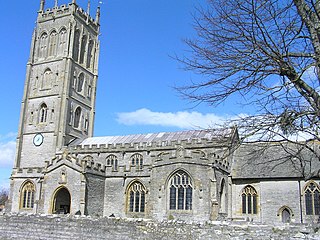
Westonzoyland is a village and civil parish in Somerset, England. It is situated on the Somerset Levels, 4 miles (6.4 km) south east of Bridgwater.

The Willows and Wetlands Visitor Centre is situated at Stoke St Gregory, on the Somerset Levels, north east of Taunton, England. Based on a working farm, growing and processing willow, the centre offers tours of over 80 acres (0.13 sq mi) of withies, willow yards and basket workshops and explains the place of willow in the history of the Levels.

The earliest known infrastructure for transport in Somerset is a series of wooden trackways laid across the Somerset Levels, an area of low-lying marshy ground. To the west of this district lies the Bristol Channel, while the other boundaries of the county of Somerset are along chains of hills that were once exploited for their mineral deposits. These natural features have all influenced the evolution of the transport network. Roads and railways either followed the hills, or needed causeways to cross the Levels. Harbours were developed, rivers improved, and linked to sources of traffic by canals. Railways were constructed throughout the area, influenced by the needs of the city of Bristol, which lies just to the north of Somerset, and to link the ports of the far south-west with the rest of England.
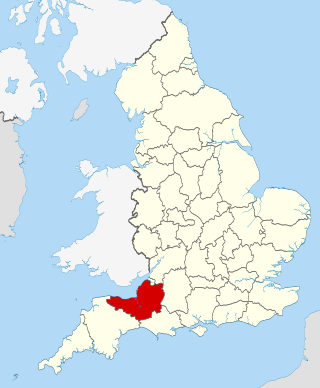
The county of Somerset is in South West England, bordered by the Bristol Channel and the counties of Bristol and Gloucestershire to the north, and Wiltshire to the east, Dorset to the south, and Devon to the west. The climate, influenced by its proximity to the Atlantic Ocean and the prevailing westerly winds, tends to be mild, damp and windy.
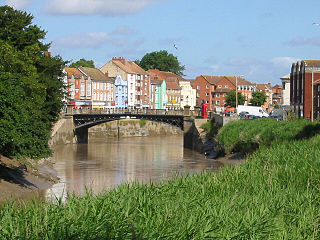
The Port of Bridgwater is a port, originally located in the town of Bridgwater, Somerset, England. Created under an 1845 Act of Parliament, it extends from Brean Down to Hinkley Point in Bridgwater Bay, and parts of the rivers Parrett, River Brue and River Axe. Although no ships now dock in the town, in 2001 103,613 (metric) tonnes of cargo were handled within the area of the Port Authority, most of which were stone products through the wharf at Dunball.

From December 2013 onwards the Somerset Levels suffered severe flooding as part of the wider 2013–2014 Atlantic winter storms in Europe and subsequent 2013–2014 United Kingdom winter floods. The Somerset Levels, or the Somerset Levels and Moors as they are less commonly but more correctly known, is a coastal plain and wetland area of central Somerset, in South West England, running south from the Mendip Hills to the Blackdown Hills.

G.W. Scott and Sons was a producer of fine wickerwork crafts, basketry, and luxury leather goods, founded in 1661 in the city of London, England, in the United Kingdom. The company ceased production in 1967.
John Chubb (1746-1818) was an amateur artist from Bridgwater in the English county of Somerset. He was born in 1746. His parents were Jonathan Chubb (1715-1805), a Bridgwater timber and wine merchant, and his wife Mary Morley, (1715-1787). John did not become a professional artist, but kept his work private. He helped run the family business, and took an active part in town politics in the Whig cause, and was Mayor of Bridgwater in 1788. He was active in the local campaign to abolish the Slave Trade.
References
- 1 2 3 4 5 6 "Gadsby Website - Our History" . Retrieved 2013-07-25.
- 1 2 3 4 Clive Fewins (1996-05-02). "Making Baskets For All Seasons". Financial Times. Retrieved 25 July 2013.
- ↑ "Willow - Transition Vision" . Retrieved 2013-07-25.
- ↑ Nelsson, Richard (2000-06-24). "The Guardian - A picknicker's guide to the world of wicker". London. Retrieved 2013-07-25.
- ↑ "Bonhams 1793: A Rolls-Royce 4 Person Picnic Basket by W Gadsby & Son" . Retrieved 2013-07-25.
- ↑ "Gadsby Website - About Us" . Retrieved 2013-07-25.
- ↑ "North Petherton Carnival - Our Friends" . Retrieved 2013-07-25.
- 1 2 "Fine Food Digest - April 2012" . Retrieved 25 July 2013.